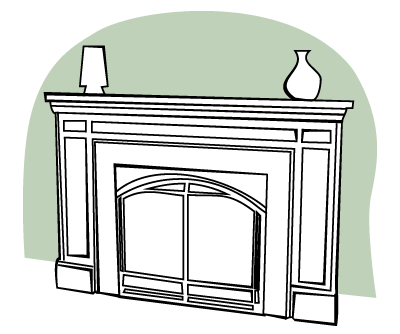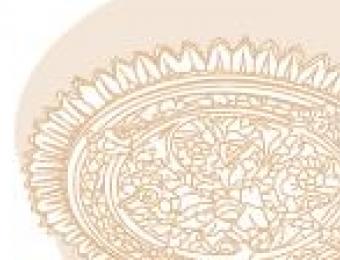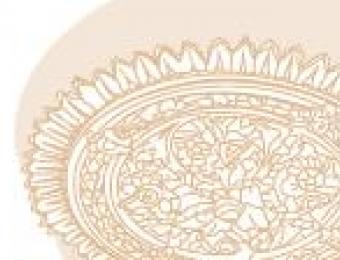
There are as many types of mouldings available as there are corners and surfaces to mount them on. Aside from various functional purposes, mouldings add visual impact and bring warmth and character to your home. Moulding is generally made from timber, however it can come in materials as diverse as plaster, brass, tin, chrome, medium density fibreboard (MDF) or polymer-based products.
Picture rails
A picture rail is a thin piece of moulding applied horizontally to the upper portion of your walls. Picture rails come in a variety of shapes and widths to complement the rest of the room’s interior design. Picture rails are used in place of hooks to hang pictures, mirrors and artwork. They can help make a small room look larger by drawing the eye upwards. Conversely, a low-hung picture rail can make a large room seem cosier.
Ceiling medallions
A ceiling medallion is a decorative moulding for your ceiling. Unlike a ceiling rose, which is installed around the ceiling’s central light fitting, a ceiling medallion can be placed anywhere on the ceiling. Medallions tend to be smaller than roses, and are sometimes used to disguise ceiling vents. Ceiling medallions are traditionally made from plaster, however they can also be found in brass, tin, chrome and polymer-based materials.
Staircases and balustrades
Staircase banisters and balustrades can be finished with moulding to maintain a sense of continuity and interest throughout your home.
Door moulding
Moulding can be used to add depth and interest to otherwise plain panel doors. Door moulding generally resembles a frame. A door might be moulded with one frame or a number of smaller frames - as long as they are symmetrical there are no real limits (in fact, even the symmetry rule is flexible).
Panel moulding
Panel moulding can be applied to walls and ceilings to create visual interest. Like door moulding, it generally resembles a frame. Interesting effects can be created by painting different colours inside and outside the frame.
Internal and external corners
Internal corner moulding runs vertically down interior (or concave) corners of your walls. Like cornices, internal corner moulding can be shaped to throw light into otherwise dark spots in the room. External corner moulding runs vertically down convex wall corners. It can be used to protect walls from bumps and chips. Moulding on internal and external corners might also serve to hide joins.
Other types of decorative moulding
Options for interior decorative moulding are almost endless. Other types of decorative moulding might include pelmets (placed over windows to conceal curtain rails and hooks), mantlepieces on top of fireplaces and heaters, picture frames and cabinet edgings and capping. Moulding can be applied to any room in your home, and is available in a wide variety of finishes to suit just about any interior design theme.





